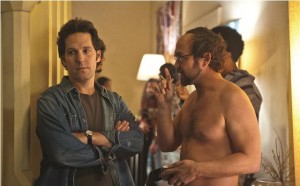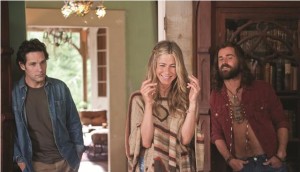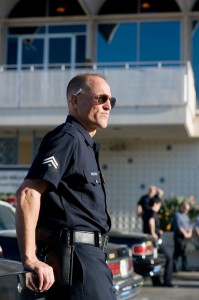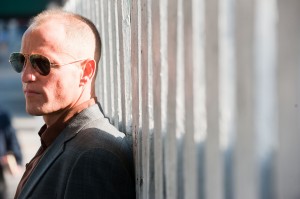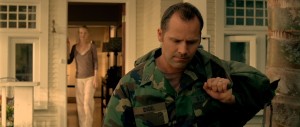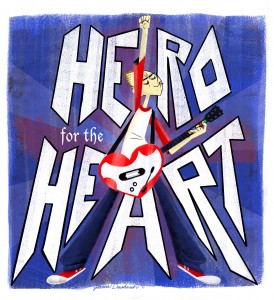Finally The Rock HAS COME BACK to DVD! Well, OK. It really hasn’t been that long since WWE‘s last Rock DVD set (2008’s The Rock: The Most Electrifying Man in Sports Entertainment) was released. But given the year-plus build to his return to singles competition at WrestleMania XXVIII in his hometown of Miami, there are many electrifying reasons to release another set of highlights from The Rock’s wrestling career.
 From his childhood days watching his father, Rocky Johnson, and grandfather, Peter Maivia, set standards in the ring, through his time playing for the University of Miami’s national championship football team up to his recent return as host of WrestleMania XXVII, The Rock: The Epic Journey of Dwayne “The Rock” Johnson recounts The Rock’s rise to becoming not only the most electrifying man in sports entertainment, but one of the biggest success stories in all of show business. Using family photos, footage that dates back to his 1996 debut at the Survivor Series and commentary from the likes of Triple H, Chris Jericho, The Rock’s WrestleMania XXVIII opponent John Cena and former Miami Hurricanes teammate Warren Sapp (The Rock himself naturally has plenty to say as well), The Epic Journey covers Johnson’s career in and out of the squared circle.
From his childhood days watching his father, Rocky Johnson, and grandfather, Peter Maivia, set standards in the ring, through his time playing for the University of Miami’s national championship football team up to his recent return as host of WrestleMania XXVII, The Rock: The Epic Journey of Dwayne “The Rock” Johnson recounts The Rock’s rise to becoming not only the most electrifying man in sports entertainment, but one of the biggest success stories in all of show business. Using family photos, footage that dates back to his 1996 debut at the Survivor Series and commentary from the likes of Triple H, Chris Jericho, The Rock’s WrestleMania XXVIII opponent John Cena and former Miami Hurricanes teammate Warren Sapp (The Rock himself naturally has plenty to say as well), The Epic Journey covers Johnson’s career in and out of the squared circle.
Whether they’re friends, foes or completely unbiased, no one can deny The Rock’s charisma, determination and natural talents, whether they be athletic, comedic or musical. But what is interesting to note (and might be easy to forget, given his aforementioned talents) is that The Rock was not always adored by the fans. Sure, most of us remember his lackluster attempts to endear himself to the fans early in his career as Rocky Maivia. But even after he dropped that gimmick, he was still greeted in much the same way his fans greet Cena today – with chants of “Rocky sucks.” But after joining the Nation of Domination, The Rock began to embrace his arrogant side, which allowed him to talk the kind of smack people, oddly enough, wanted to hear. (Mick Foley even acknowledges on The Epic Journey that The Rock all but invented the term “smackdown.”) But it wasn’t so much that fans wanted to hear him eloquently talking trash to just about anyone he encountered, then backing it up with his in-ring abilities. It’s just that fans can sense when someone is being genuine and, in much the same way they embraced “Stone Cold” Steve Austin‘s antihero behavior, they also took to The Rock’s innate ability to sincerely say what was on his mind and make it wildly entertaining.
But even after he dethroned Farooq as the leader of the Nation, formed an unlikely alliance with Foley as the popular Rock & Sock Connection and became a pop cultural icon, The Rock still fell out of favor with the fans for a while as his rivalry with the previous generation’s icon, Hulk Hogan, came to a boil, as well as when fans began to label him as a Hollywood sellout. We all know The Rock was able to recover from that, but with the back-and-forth between The Rock and Cena over the past year or so, seeing The Rock being treated the way many fans treat Cena now puts everything into new perspective.
Another thing that helps put things into perspective is the matches that are included on this three-disc set. With the things people like Razor Ramon, Shawn Michaels, the Hardy Boyz and others have done in ladder matches, re-watching The Rock and Triple H do battle for the Intercontinental Championship at SummerSlam in 1998 is a reminder of how these two big guys redefined what a ladder match could be. And the “I quit” match against Mankind at the ’99 Royal Rumble shows us a vicious side of The Rock not often revealed.
The Epic Journey also includes his no holds barred match for the World Wrestling Federation Championship against Austin at Backlash in ’99, the triple threat match between The Rock, Triple H and Kurt Angle for that same title at SummerSlam 2000 and his match against Brock Lesnar for the Undisputed Championship at SummerSlam in 2002. Other classic encounters include a 2002 Raw match against Ric Flair, the No Way Out match against Hulk Hogan in 2003 and his recent return to Raw and WrestleMania in 2011. In much the same way the recent Stone Cold DVD set duplicated very little from the previous Stone Cold set, none of the matches on The Epic Journey are featured on The Most Electrifying Man. And that fact not only gives fans plenty of reason to check out this new DVD (even if they’ve already seen the other one), but it’s also a testament to just how electrifying The Rock’s journey in wrestling and beyond has been.
For more information, go to www.wweshop.com.








